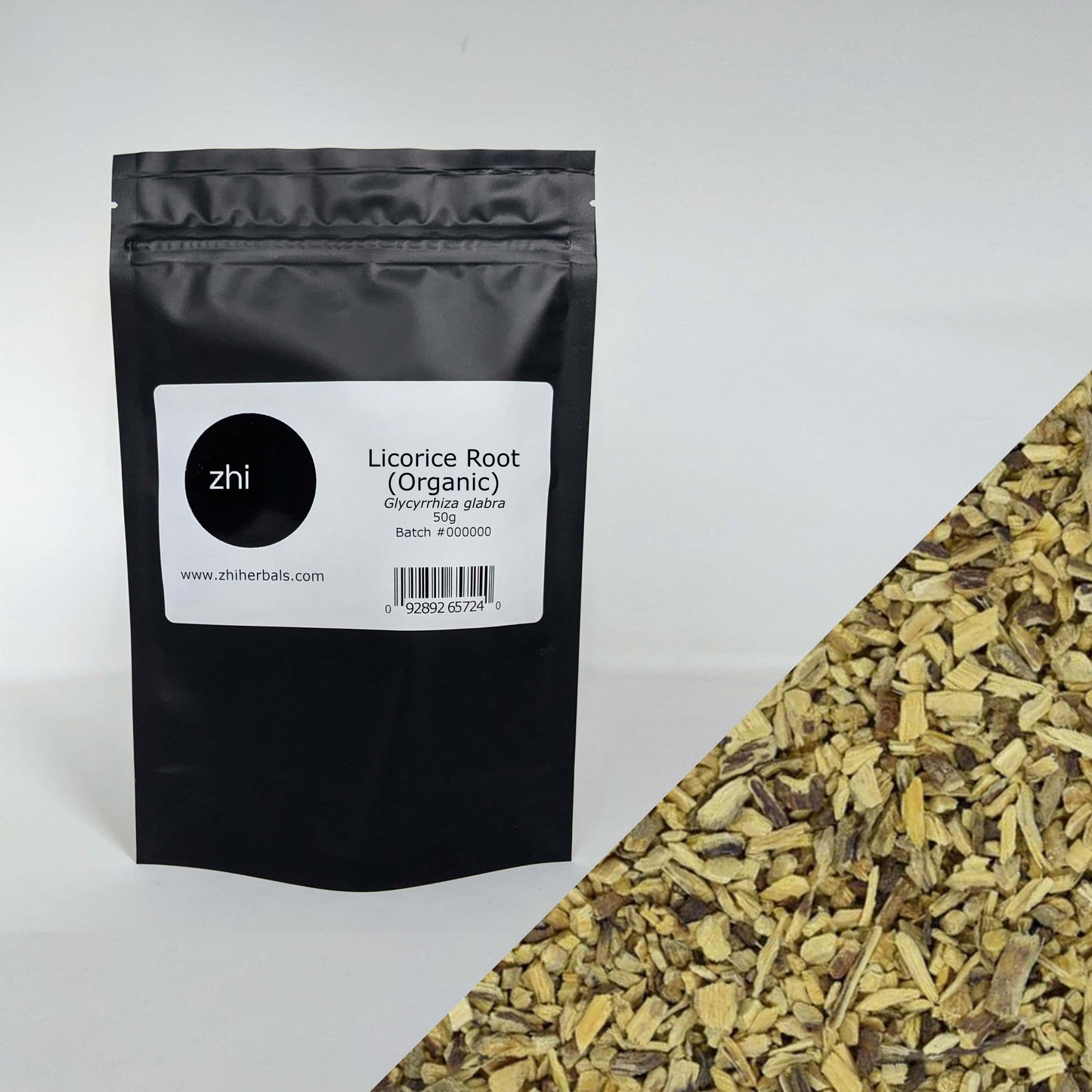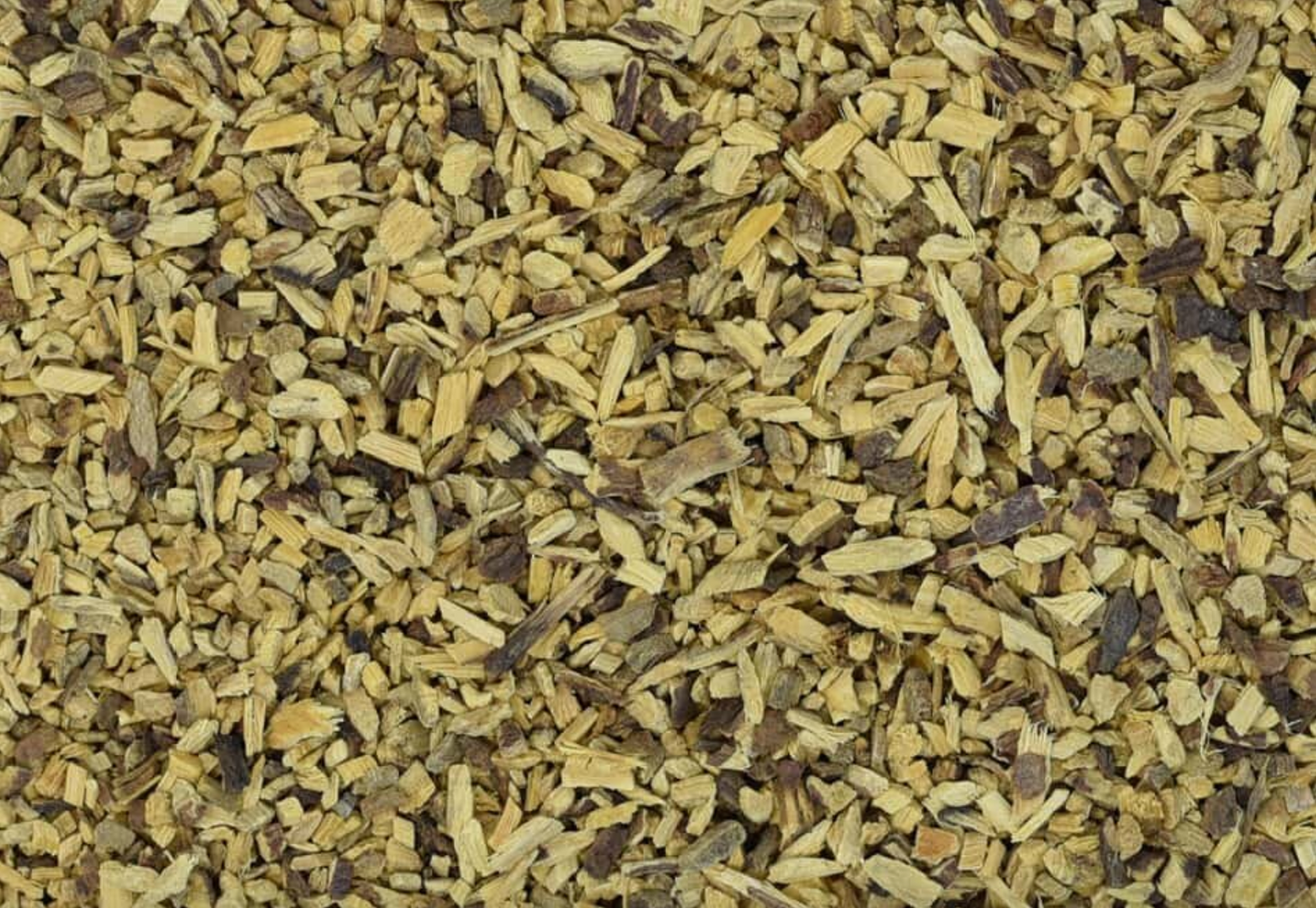Zhi Herbals
Licorice Root (Organic)
Licorice Root (Organic)
Couldn't load pickup availability
Common Name
Licorice Root, Russian Licorice, Spanish Licorice, Turkish Licorice, Liquorice, Sweetwood
Latin Name
Glycyrrhiza glabra
Origin
Turkey
What Is Licorice Root?
Licorice root, also known as ‘Glycyrrhiza glabra’ is a root often used in herbal medicine for its restorative effect on the nervous system, as well as its immune balancing and expectorant benefits. The name ‘Glycyrhhiza’ means ‘sweet root’, referring to the intense flavor of licorice. The flavor of licorice root is approximately 50 times sweeter tasting than regular sugar.
Licorice is a widely used herb that works well for both children and adults.
It has been consumed since at least 190 AD, although was likely being used much prior to that. It can be used as a medicine or a culinary herb. In some situations, licorice root can be used as a substitute for anise seed or star anise.
Licorice is native to Southern Europe and some parts of Asia.
Licorice works well both on its own and when combined with other herbs.
How to Use Licorice Root (Common Uses)
Licorice can be taken internally as a tea, decoction, powder, capsules, lozenges, or extract. Licorice can be used externally as a wash or poultice. It can also be used as a culinary herb, and the whole sticks can be chewed.
Medicinal Uses and Benefits of Licorice Root
Licorice is often used in Traditional Chinese Medicine (TCM) to harmonize contrasting herbs. TCM practitioners also frequently prescribe licorice root for coughs with mucus that is difficult to eject, sore throats, and digestive complaints. It has benefits for tonifying the spleen, lungs, and stomach.
It is restorative to the adrenal glands, antispasmodic, and anti-inflammatory. Due to its nervous system healing and immune balancing effects, licorice root may be especially beneficial for people with autoimmune and immune system deficiency conditions such as lupus and chronic fatigue syndrome (CFS).
Licorice root is gently detoxifying. It has a mild laxative effect and can help to support the liver.
Licorice is an expectorant, and can be useful for coughs and colds. It balances the immune system, provides antiviral benefits, and can help to reduce general inflammation in the body. It is especially indicated for dry coughs.
Licorice is a popular ingredient in many herbal formulas, although most commonly it is used for increasing energy and endurance, for colds and coughs, and enhancing digestion.
As a digestive herb, licorice root can help to soothe upset stomachs and repair the mucosa of the digestive system.
When applied topically, licorice root can help to suppress the secretion of sebum on the scalp.
Women may be more sensitive the the effects of licorice.
Active Constituents in Licorice Root
Glycyrrhizin, glycyrrhizic acid, flavonoids, isoflavonoids, phystosterols, polysaccharides.
Notable Facts About Licorice Root
Licorice is often associated with love and protection.
It was buried in tombs in by the ancient Egyptians to protect the soul on its journey to the afterlife.
Despite its name, the vast majority of licorice candy available in Canada and the United States is flavored with anise seed oil and does not actually contain any of the licorice plant.
Share


Great service and good quality. Thanks
Great, fast and efficiently. Loved the free shipping.
Great service and fast shipment. Top-notch quality product.
I received free delivery very quickly and am happy with all my purchases from ZHI


